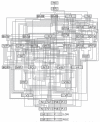Consciousness
- PMID: 26900168
- PMCID: PMC4757852
- DOI: 10.1162/DAED_a_00321
Consciousness
Abstract
No one did more to draw neuroscientists' attention to the problem of consciousness in the twentieth century than Francis Crick, who may be better known as the co-discoverer (with James Watson) of the structure of DNA. Crick focused his research on visual awareness and based his analysis on the progress made over the last fifty years in uncovering the neural mechanisms underlying visual perception. Because much of what happens in our brains occurs below the level of consciousness and many of our intuitions about unconscious processing are misleading, consciousness remains an elusive problem. In the end, when all of the brain mechanisms that underlie consciousness have been identified, will we still be asking: "What is consciousness?" Or will the question shift, just as the question "What is life?" is no longer the same as it was before Francis Crick?
Figures



References
-
- Crick Francis H.C. What Mad Pursuit: A Personal View of Scientific Discovery. Basic Books; New York: 1988.
-
-
There is no single accepted scientific definition of consciousness. However, it includes the state of being awake and aware of one’s surroundings, the awareness or perception of something, and the mind’s awareness of itself and the world.
-
-
- Crick Francis. private communication to Terrence J. Sejnowski. 1998.
-
- Crick Francis, Koch Christof. The Problem of Consciousness. Scientific American. 1992;267(3):10–17. - PubMed
- Crick Francis, Koch Christof. Are We Aware of Neural Activity in Primary Visual Cortex? Nature. 1995;375:121–123. - PubMed
- Crick Francis, Koch Christof. Constraints on Cortical and Thalamic Projections: The No-Strong-Loops Hypothesis. Nature. 1998;391:245–250. - PubMed
- Crick Francis, Koch Christof. A Framework for Consciousness. Nature Neuroscience. 2003;6:119–126. - PubMed
- Crick Francis, Koch Christof, Kreiman Gabriel, Fried Itzhak. Consciousness and Neurosurgery. Neurosurgery. 2004;55(2):273–281. - PubMed
